 Want to increase the visibility of your YouTube videos?
Want to increase the visibility of your YouTube videos?
Wondering how to help your videos perform well with the YouTube algorithm?
To explore how to get more views for your videos on YouTube, I interview Sean Cannell.
More About This Show
The Social Media Marketing podcast is an on-demand talk radio show from Social Media Examiner. It's designed to help busy marketers, business owners, and creators discover what works with social media marketing.
In this episode, I interview Sean Cannell, a YouTube expert who specializes in video influencers, video equipment, and video marketing. He creates videos for multiple channels with 200,000+ subscribers each. His course is Video Ranking Academy.
You'll discover how to help your videos appear as suggested videos and rank well in search results.
Sean explains how views, comments, and referrals from outside YouTube boost a video's ranking.
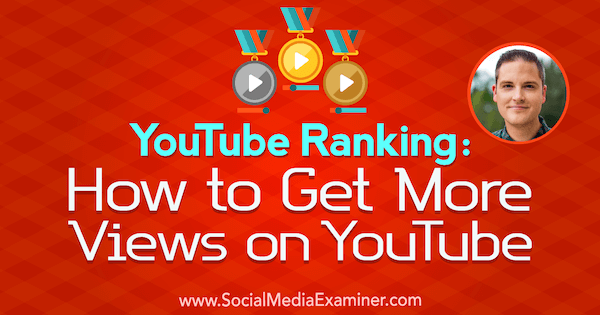
Share your feedback, read the show notes, and get the links mentioned in this episode below.
Listen Now
Where to subscribe: Apple Podcasts | Spotify | YouTube Music | YouTube | Amazon Music | RSS
Here are some of the things you'll discover in this show:
YouTube Ranking
Sean's Story
Sean learned about producing video and doing it consistently through a volunteer role with his church. Around 2003, the youth pastor asked Sean to record weekly video announcements. The first year, Sean made 52 videos.
Then he began creating videos for Sundays, too. So before YouTube even launched, Sean was producing 104 videos a year. By 2007, Sean was managing the church's YouTube channel and learning about creating titles and thumbnails. From that experience, Sean started a business creating wedding videos and commercials, and working with YouTubers, coaches, authors, and speakers to help them leverage the power of YouTube.
After about 15 years of handling the different aspects of YouTube and video production behind the scenes, Sean launched his current business, through which he's built a personal brand. Sean's main personal channel, Think Media, has tips and tools for building your influence with online video.
Get World-Class Marketing Training — All Year Long!
Are you facing doubt, uncertainty, or overwhelm? The Social Media Marketing Society can help.
Each month, you’ll receive training from trusted marketing experts, covering everything from AI to organic social marketing. When you join, you’ll also get immediate access to:
- A library of 100+ marketing trainings
- A community of like-minded marketers
- Monthly online community meetups
- Relevant news and trends updates

He focuses on the tools (cameras, lighting, microphones). He also helps people who want to improve the videos they produce or stream via a smartphone, or who want to level-up their video production.
The other channel, Video Influencers, is a weekly interview show where video influencers share their best advice. Sean talks to YouTubers and people using video on Facebook, Snapchat, Instagram, or any other platform.

All in all, since Sean started working with video, he's probably published more than 2,000 videos and thus has seen a lot of video data.
Listen to the show to discover how Sean feels about his early videos.
What YouTube's Algorithm Considers
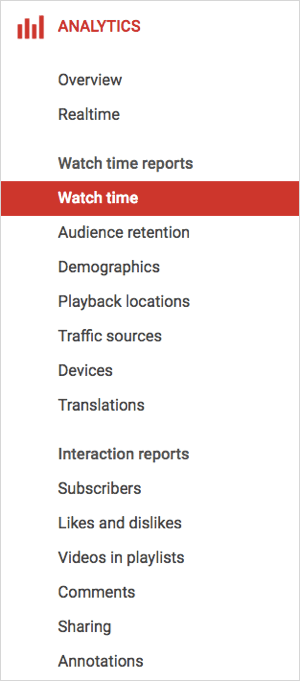 Most people think video views are the most important metric. If a video has a million or even 10,000 views, it must be amazing. However, a few years ago, YouTube changed the algorithm, and now minutes watched matter more than views. Minutes matter most, Sean says.
Most people think video views are the most important metric. If a video has a million or even 10,000 views, it must be amazing. However, a few years ago, YouTube changed the algorithm, and now minutes watched matter more than views. Minutes matter most, Sean says.
The emphasis on minutes watched makes sense if you think about YouTube's perspective. A video with a deceptive (or clickbait) title may get only 1 or 2 seconds of view time because the viewer quickly realizes the video isn't what they thought it would be. However, when somebody commits to a video for even 60 seconds, it definitely has more value because it keeps viewers on the platform longer.
The order in which Creator Studio displays YouTube analytics reflects this emphasis on minutes. The top metric is watch time, the second is views, and the third is subscribers. Although views and subscribers matter, YouTube is most concerned with viewer sessions.
With watch time, YouTube's algorithm considers two factors. First, YouTube wants people to watch content on your channel. So if you upload a 10-minute video and someone watches 7 minutes, that's great. Second, YouTube measures time on the platform. For example, when you send an email with a link to a YouTube video, people who click that link start sessions. When they spend 5 minutes with you and then an hour on the platform, a portion of that hour will be credited to you.
Just like any social network or platform, YouTube wants people there longer so they can tell advertisers and others that people don't just watch 3-minute cat videos on this channel. They consume substantial content. YouTube will reward you for making creative, compelling, attention-grabbing, and attention-keeping content.
YouTube differs from social networks like Facebook in that the YouTube algorithm will promote videos that perform well even if they're older. Although new content is powerful, videos in your feed could be a few months or even years old. YouTube is more like a content library than a social network with a news feed like Facebook.
YouTube has so much evergreen and quality content that people will watch beyond the moment you release a video or promote it on your other social networks to drive traffic.
Listen to the show to hear Sean explain what you can learn from your YouTube home page and subscription feed.
How to Get Your Videos to Rank
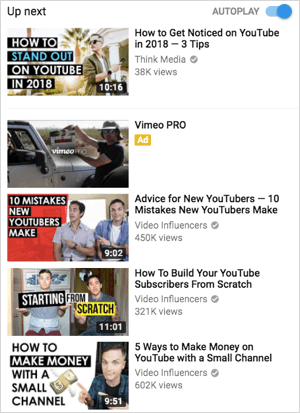 “Ranking” refers to where a video ranks in search results, as well as the likelihood it will appear as a suggested video. In fact, on YouTube, suggested videos (which appear in the right sidebar or at the end of a video) are the number-one traffic source. Suggested videos are like the engine driving a viewer's session duration.
“Ranking” refers to where a video ranks in search results, as well as the likelihood it will appear as a suggested video. In fact, on YouTube, suggested videos (which appear in the right sidebar or at the end of a video) are the number-one traffic source. Suggested videos are like the engine driving a viewer's session duration.
Search is the second most important traffic source. If someone types a term in the search box, hopefully your video is in the top three places or at least on the first page. Just as ranking well in Google search can make or break your business, ranking well in YouTube search has important benefits, too.
Sean learned about the benefits of SEO on YouTube by starting a channel in his name around 2010 and just experimenting. During this time, Sean made a video called Gift Ideas for Him, in which he reviewed things he already had around the house. Although the video is several years old, it still ranks in the first four spots when someone types Gift Ideas for Him in the YouTube search box. The video gets views not only during the holidays, but also throughout the year.
A well-ranked video is not only a way to get “views while you snooze” (as Sean's friend Sunny Lenarduzzi says), but also a way to make money with affiliate marketing. In the Gift Ideas for Him video, Sean mentions that affiliate links to all of the products are in the video description. Through this video experiment, Sean began to see how a high-ranking video could help drive affiliate traffic plus other business goals, like leads, email list signups, or promotion of your own product.
In fact, ranking videos and doing affiliate marketing with Amazon Associates via YouTube is how Sean became a full-time entrepreneur. This tactic eventually replaced all of his other income as he continued to put out strategic, ranked videos that were monetized on the back end.
Research: To rank well in search results, Sean suggests researching what search term you want to rank for before you start creating a video. Entrepreneurs and marketers often develop their video content and don't think about the video title until they sit down to post that content online. Sean says that's a mistake.
Before Sean records a video, he knows the title, tags, and content of the video. To identify the right title and content for your video, do your research before you ever hit the record button. In the how-to space, determining your title is easy. To illustrate, a video on “how to build a table” for a woodworking channel answers that question.
Although certain keywords are crowded, Sean says the wide range of keywords offers a lot of opportunities. Some of Sean's friends and other tech YouTubers rank higher than he does for one term, and he's a little higher on another.
Look for keywords (either individual words or phrases) that you can discover in Google Keyword Planner. Sean's favorite thing to do is go to the YouTube search bar, start typing, and see how it finishes your sentence. Those predictions are what real people search for in order of importance.
For instance, type in “How to meal,” and it'll probably say, “How to meal prep low carb.” You might also see the search phrases on meal prep for muscle gain or weight loss. You shouldn't try to rank for “How to meal prep.” It's too general. Wanting to gain muscle versus losing weight are two very specific and totally different intents.
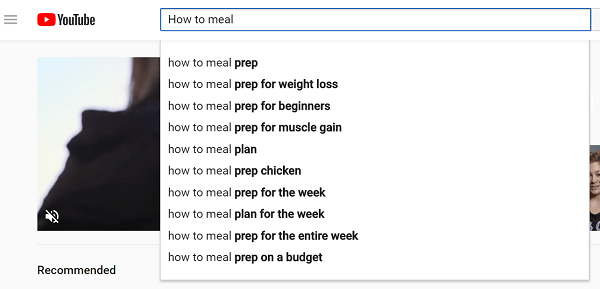
Content: In a nutshell, you want to reverse-engineer the content to be as close as possible to the best answer for that search term. Remember that Google owns YouTube, and thus the search feature on both platforms does one thing: It serves up the best answer to an inquiry.
Through your research, you also want to know what content your video will be competing with. The idea is to create a video that improves upon others' content. If somebody with a fitness YouTube channel wanted to rank for “How to meal prep for weight loss,” they could create a video that's perfectly matched to the intent of that search term, and give great information and best practices.
Another mistake entrepreneurs make is focusing too much on production value. Everyone's number-one question is about what camera to buy. That's fine and production value is important; however, content value is infinitely more important.
If the audience wants to figure out how to plan their week better and you're trying to rank for a productivity term, give them great value and actionable tips. When they thumbs-up the video and leave a comment, those engagement signals go into Google's ranking of the video. The key is to put good, powerful content on the other side of the search term.
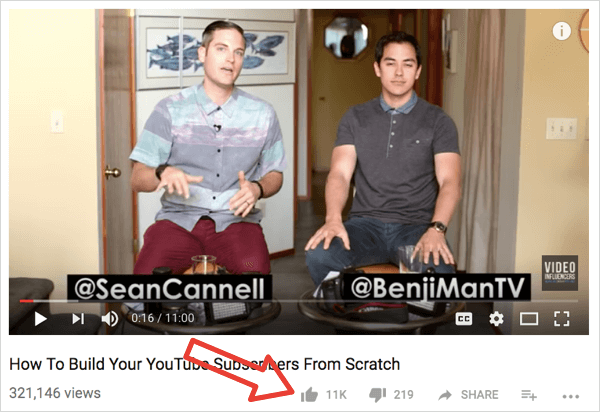
Tags, engagement, sessions, and more: When you post the video to YouTube, put the keyword (or key phrase) in your title, description, and tags, and have related tags around it.
Next, get session time on your video. Ranking has about 19 different factors, but watch time is the biggest. Second are engagement factors such as likes, comments, and YouTube seeing that the video resonates with others.
Third, bring people from elsewhere online to YouTube. YouTube loves to see your content attracting new sessions and traffic from other social networks. If you have Twitter, Facebook, or Instagram influence or email lists, leverage that traffic when you release a new video to get those viewers onto YouTube. All those signals matter for ranking.
One last thing to consider is that the first 24 hours matter most and then the next 7 days. After that, your video's ranking is pretty much set, at least for the immediate future.
I ask if YouTube is smart enough to listen to the content in the video to confirm that the substance of the video matches the tags, and Sean thinks yes. YouTube closed-captions your video with its best guess (and it's getting better all the time). You can edit and improve the automated captions, but YouTube's tool is one of the fastest ways to caption.
As you go through the whole process of researching, producing, and posting your videos, make sure the title, content, and tags all emphasize the same idea. Say you have a video about how to boost productivity and plan your day more effectively. Your product is a planner. Yet if you never say the words planning or productivity in the video, Google will find that odd. That's why it's nice to know your title with keywords ahead of time.
Although you may have variations, you still want to say the exact words to stack value around a topic. For example, if you talk about the three biggest mistakes people make with cryptocurrency, you might say cryptocurrency, crypto, Bitcoin, and all of the things that would come out naturally. Be intentional about every detail.

Discover Proven Marketing Strategies and Tips
Want to go even deeper with your marketing? Check out the Social Media Marketing Podcast! Publishing weekly since 2012, the Social Media Marketing Podcast helps you navigate the constantly changing marketing jungle, with expert interviews from marketing pros.
But don’t let the name fool you. This show is about a lot more than just social media marketing. With over 600 episodes and millions of downloads each year, this show has been a trusted source for marketers for well over a decade.
Ranking goes back to congruence among all of these pieces of your video. Someone types in a title. Then, they hear you saying the thing they're searching for and maybe they also see it. You could show the final product in the video and say, “This is the result we're going to have by the end of the video, so stick around because this tutorial will show you how to get there.” Think through the whole process from start to finish. Doing this is critical when you want videos to rank well in search results.
Listen to hear Sean's example of introducing a video with keywords.
Sean's Cluster Strategy
Create clusters of related content that can link together and promote each other directly and indirectly. When this cluster technique is done well, your clustered videos show up as suggested and related videos for each other, and for other people's videos.
In a cluster strategy, you would no longer create one video around one topic on your YouTube channel one week and then completely change topics to a new area the next. For instance, a business YouTube channel might create a video about productivity one week, and the next week, talk about how to save money on your taxes.
Instead, you would create clusters of videos that all are related. Before recording, Sean thinks through four or even 10 videos that can all be related. That way, as he records the series, he can cross-reference videos from the cluster when relevant, and put links to related videos on YouTube cards and in the video description.
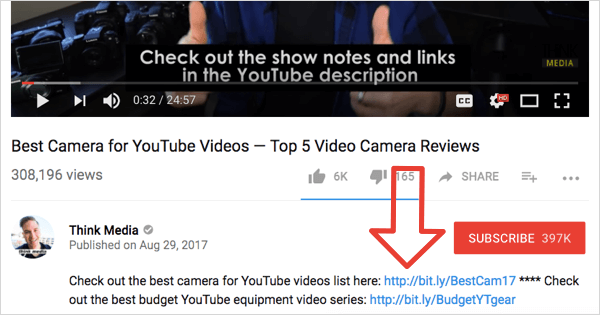
Note: YouTube cards enable you to have clickable links that work on mobile and desktop, and can show up mid-video. End screens work similarly but will appear only during the last 20 seconds.
To demonstrate, instead of doing one video on tech gift ideas for the holidays, Sean did four and released them once a week. During those videos, if he mentioned one tech gift idea and had another full-length video about it, he might say, “We did a full review about this. I'll link to it on the YouTube card and post it in the YouTube description below.”
When those videos end, he says, “Thanks for checking out this video. Subscribe for more videos just like this. And if you want to see other videos in our Tech Gift Guide Series, just click or tap the screen right here.” And he'd point to the end screen. Or, “If you want to see another video from Think Media, just click or tap the screen right there.” These are now clickable videos at the end.
Focus on creating binge-worthy content for YouTube. Sean gets feedback from viewers that they discovered one of his videos and fell into the rabbit hole. Sean's channel covers the best tips and tools so his topics include how to get views, how to light your scene better, what's the best audio, what's the best camera, how to set up your YouTube channel, and how to design cover art.
Break your topics down into more bite-sized, digestible, comprehensive pieces, but stick to one topic. Think about this power phrase: one keyword, one video. Rather than try to do four things with one video, do one thing with one video that directly addresses an exact pain point, search phrase, or search term.
While a good video topic could be “the best equipment for YouTube,” it's broad. A video on iPhone microphones would be much more specific. Your cluster of videos should have multiple entry points. One day, a person might be looking for a microphone and then see other terms through related and suggested videos. Sean gets a lot of traffic from his and other people's content.
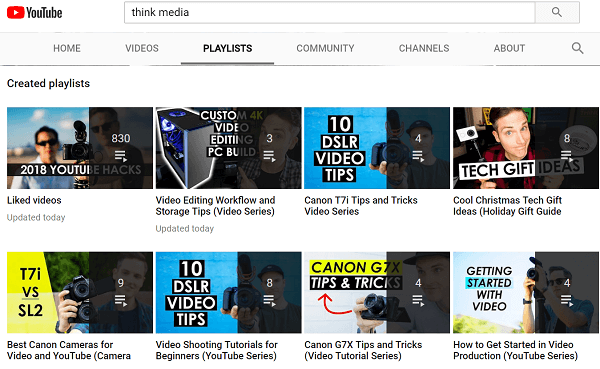
Plus, creating clusters of videos and integrating them with your YouTube playlist are great tactics for organizing content for your audience. Also, clusters and playlists organize the content for the algorithm. You have a better chance of showing up in your own and others' suggested videos because the algorithm relates that cluster of videos together. There are just so many benefits.
Sean suggests using tools such as vidIQ and TubeBuddy to see where your keywords rank. The free versions of these tools will get you all of the data you need. If the data seems all over the place, that's because it is. YouTube tests your video, letting it spend a few seconds or minutes in a certain market or with a certain number of users to see the click-through rate.
As YouTube tests your video, the thumbnail and title are important because YouTube notices when the video attracts clicks, and measures that activity to determine where to rank the video immediately and in the short term.
Sean says he and friends like Derral Eves and Tim Schmoyer have found that YouTube spends the first 24 hours figuring out probably 80% of where your video will rank. Then over the next 7 days, YouTube is watching whether your video is still driving traffic and getting engagement.
For content creators, that means when you release a video, you need a system. You want to get as much traffic as possible in the first 24 hours, whether it's from people on your email list; via posts on social media morning, noon, and night (and more on Twitter); or even using some paid traffic to get a little bit of a boost on that first day. After a video ranks well, it can give you traffic for literally weeks, months, or even years to come.
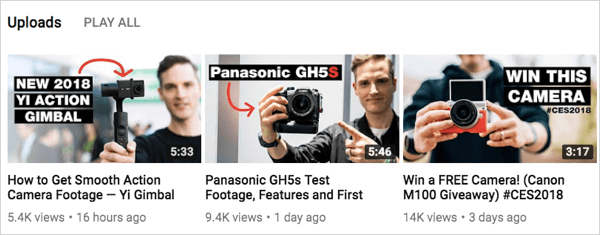
Sean has hundreds of ranked videos, so he knows the worth of putting in as much hustle as possible, even after that first 24 hours. YouTube just added a Community tab, where you can also share your video links.
Keep in mind that every time you answer a comment on YouTube, your reply counts, too. So if you have 50 comments and reply to all of them, you have 100 comments. Block out time to reply to every comment, and you'll double the engagement on the video. If everything else is equal but you get 100 comments and your competitor has 50, your video will outrank theirs.
Listen to the show to hear more about The Journey and how I'm creating it as binge content.
Why Sean Loves YouTube Live
One of the reasons Sean loves YouTube Live is the same as why he loves regular YouTube. It's the second-largest search engine in the world.
Each week, Sean tries to go live once on Facebook Live and once on YouTube Live. The big difference between the two platforms is Facebook will serve your live video to your audience, especially when you initially go live. Plus, in the next 24 hours, a few more people will see the replay video in their news feeds. However, that Facebook Live broadcast probably doesn't have a lot of value 2 or 3 weeks later. It's more real-time content.
However, YouTube is a content library, and as such, a YouTube Live video replay can also rank in search. For YouTube Live, Sean prioritizes the evergreen value of the video. On Facebook, he'll greet people, hang out, go longer in Q&A, and spend a little more time being relational. On YouTube Live, he wants to get to the point. His friend and mentor Chalene Johnson says, “Be brief, be bright, be fun, and be done.”
For example, Sean streamed a YouTube Live video about How to Set Up Your YouTube Channel. He ran the live session like a webinar with a slide deck and screen share that walked viewers through each step. The replay has the same feel as a webinar recording posted on YouTube.
That live video has been in the top 10 for almost a year. The video ranks in search, but it was tailored to do so. Rather than chat and interact as one might on Facebook Live, Sean got right to the point, said what's coming up, and did a deep dive into the topic.
To help a YouTube Live video replay perform well in search, Sean plans ahead. The title, tags, and content are all planned out in advance, just as with his regular YouTube videos.
Even if your YouTube Live video replay doesn't rank in the long term, going live on YouTube can still be valuable in building your audience, especially when you're competing for a popular keyword. Using vidIQ and TubeBuddy, Sean has found that a YouTube Live video will rank as high as number one for the entirety of the live video, even if the replay doesn't rank later, because YouTube favors live. So YouTube Live has a short-term benefit, too.
Listen to the show to learn more about Sean's video ranking course, and to hear him break down the 7 Rs.
Want more like this? Explore YouTube for Business!
Discovery of the Week
With Grammarly Keyboard, you can add a native keyboard to your smartphone that helps you check spelling and grammar while you're on the go.
After you install the Grammarly Keyboard app, you can switch to its native keyboard on your mobile device in the same way you switch to other keyboards (like the one for emojis). The app scans your social posts and emails on mobile for spelling, grammar, punctuation, and so on. This keyboard is a great way to avoid the typos and errors that are easier to make when you're posting to social media from a mobile device.
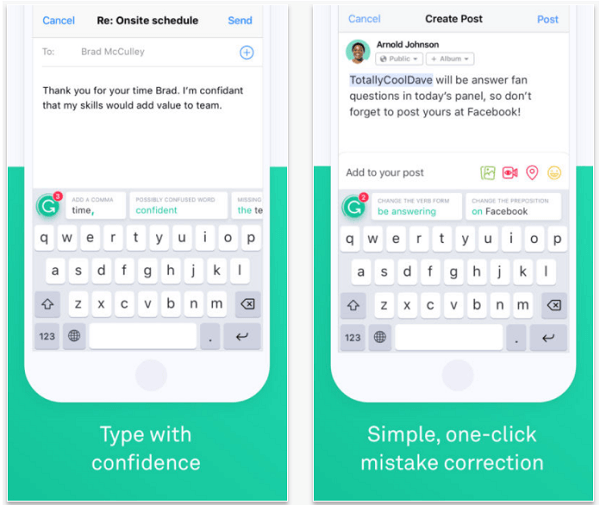
After you finish typing your post or comment, switch to Grammarly Keyboard to check everything. When the keyboard scans your text, it'll say things like, “Did you mean to not …”
Grammarly Keyboard is a free app for both iOS and Android.
Listen to the show to learn more and let us know how Grammarly Keyboard works for you.
Listen to the show!
Where to subscribe: Apple Podcasts | Spotify | YouTube Music | YouTube | Amazon Music | RSS
Key takeaways mentioned in this episode:
-
- Learn more about Sean on his website.
- Check out Video Ranking Academy.
- For free training, go to TubeMasterclass.com.
- Watch Sean's YouTube channels: Think Media and Video Influencers.
- Follow @SeanCannell on Twitter.
- Check your YouTube analytics.
- Watch the Gift Ideas for Him video on Sean's YouTube channel.
- Explore Google Keyword Planner.
- Take a look at vidIQ and TubeBuddy.
- Try YouTube Live.
- Watch How to Set Up Your YouTube Channel.
- Learn more about Sunny Lenarduzzi, Derral Eves, Tim Schmoyer, and Chalene Johnson.
- Check out Grammarly Keyboard.
- Watch our weekly Social Media Marketing Talk Show on Fridays at 10 AM Pacific on Crowdcast or tune in on Facebook Live.
-
- Learn more about Social Media Marketing World 2018.
- Watch The Journey.
Help Us Spread the Word! Please let your Twitter followers know about this podcast. Simply click here now to post a tweet.
If you enjoyed this episode of the Social Media Marketing podcast, please head over to iTunes, leave a rating, write a review, and subscribe. And if you listen on Stitcher, please click here to rate and review this show.
What do you think? What are your thoughts on YouTube ranking? Please leave your comments below.
Attention Agency Owners, Brand Marketers, and Consultants

Introducing the Marketing Agency Show–our newest podcast designed to explore the struggles of agency marketers.
Join show host and agency owner, Brooke Sellas, as she interviews agency marketers and digs deep into their biggest challenges. Explore topics like navigating rough economic times, leveraging AI, service diversification, client acquisition, and much more.
Just pull up your favorite podcast app, search for Marketing Agency Show and start listening. Or click the button below for more information.

